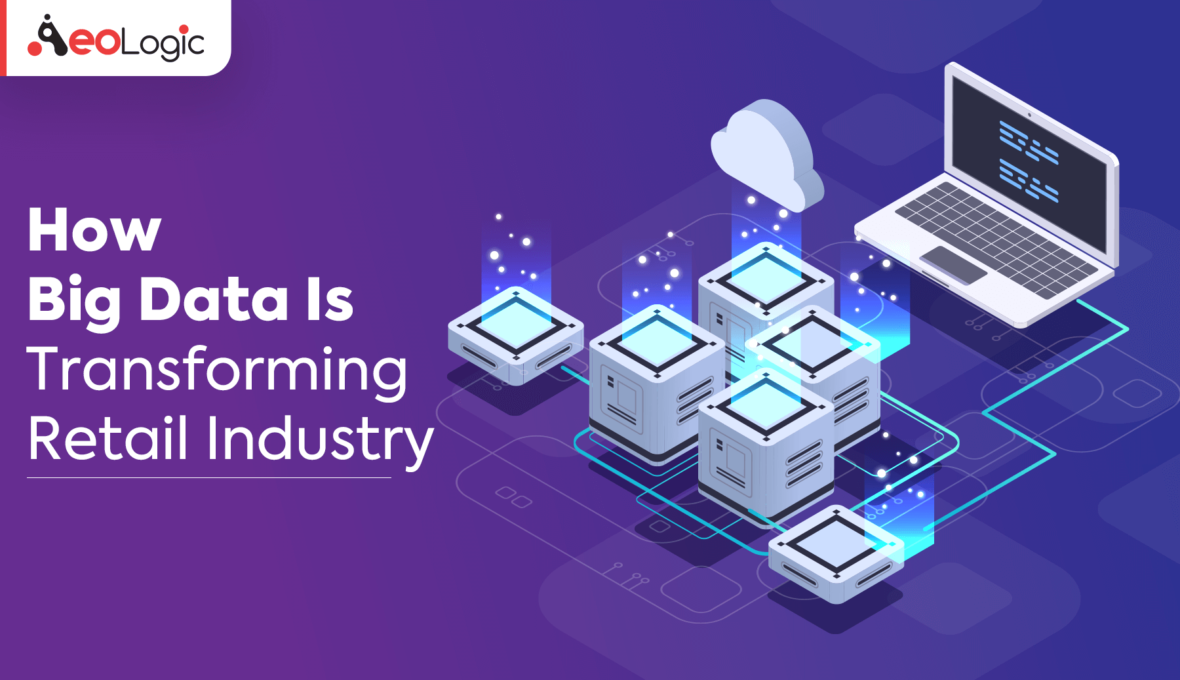Personalization is the “new marketing”. In 2019, the chatbots took over marketing strategies of several companies, and it worked wonders. People got accustomed to customizing shopping suggestions and getting recommendations on their browsing history. The facilitator of this last mile (cart to checkout) marketing, is Artificial Intelligence, Machine Learning and analytics (Big Data). This combination of ML, AI and Big Data provided companies with customer purchasing analytics that wasn’t possible before.
To be more precise, Big Data gave a new direction to analytics, as the tech made the revelation of patterns, associations, and trends, especially relating to human interactions and behaviours, extremely easy. For the retail industry, Big Data is a gold mine as it allows them to understand customer shopping habits which later helps them to create marketing strategies with design thinking.
In view of this ongoing disruption, it becomes important for traditional and modern retail companies to understand the relevance of the big data. Here are our thoughts–
It helps predict the spending power of the customers– Loyalty programs is one of the most exclusive ways to understand the purchasing power of the customer. This data is collected through transactions recorded through debit and credit cards, user login in and even IP addresses. Once substantial information is collected then retail companies can analyze the data by mapping consumer browsing and purchase history and predict future expenditure. Companies like Amazon have seen a 29% of increase in their sales through Big Data analysis.
“According to Mckinsey, Big Data Analytics in a retail chain can improve the operating margin by around 60%”–McKinsey
It helps you predict customer journey analytics– From research to purchase the customer’s journey is a complete zigzag. And to understand the customer’s journey, Big Data is the only way any company can answer most complicated questions like-
- What are the places where customers are actually browsing for product information?
- Why are companies losing on their customers?
- What are customers most go-to places for reviews?
- What compels a customer to buy a product?
- What is the most common product a customer buys?
- What is the frequency of customer buying products?
With these answers handy with the retail companies can increase the revenue of their online stores by a good percentage.
It helps you in forecasting the demand in retail- Social Media Marketing plays a very important role in the retail industry. Big Data empowers retail companies to create an analysis of the next upcoming trend. Big Data is not only equipped in predicting social media trends but also can forecasting weather. Weather Channels often use Big Data to predict weather and help companies use this data to launch their next line of products; companies like Pantene use this method the most.
Few additional benefits with Big Data for Retail Companies-
- It increases consumer’s bill value
- Improves Customer’s satisfaction
- Helps stores in upgrading store merchandizing
- Helps companies focus more on High-Value customers
- Enhances customers footfall
- Helps in developing smart pricing
- Helps in analyzing customer behaviour to maximize overall revenue
- Helps in developing a better understanding of social media
- Helps in boosting product demand
- Helps in restoring cold customers
Final Words
The inclusion of Big Data in multiple sectors today marks the inception of a digital revolution. The post COVID world will have disruptive technologies make most of the quantitative decisions for companies. AeoLogic works with the Goverment and public sector companies in order to decide their technological route during and after the pandemic using disruptive technologies.






